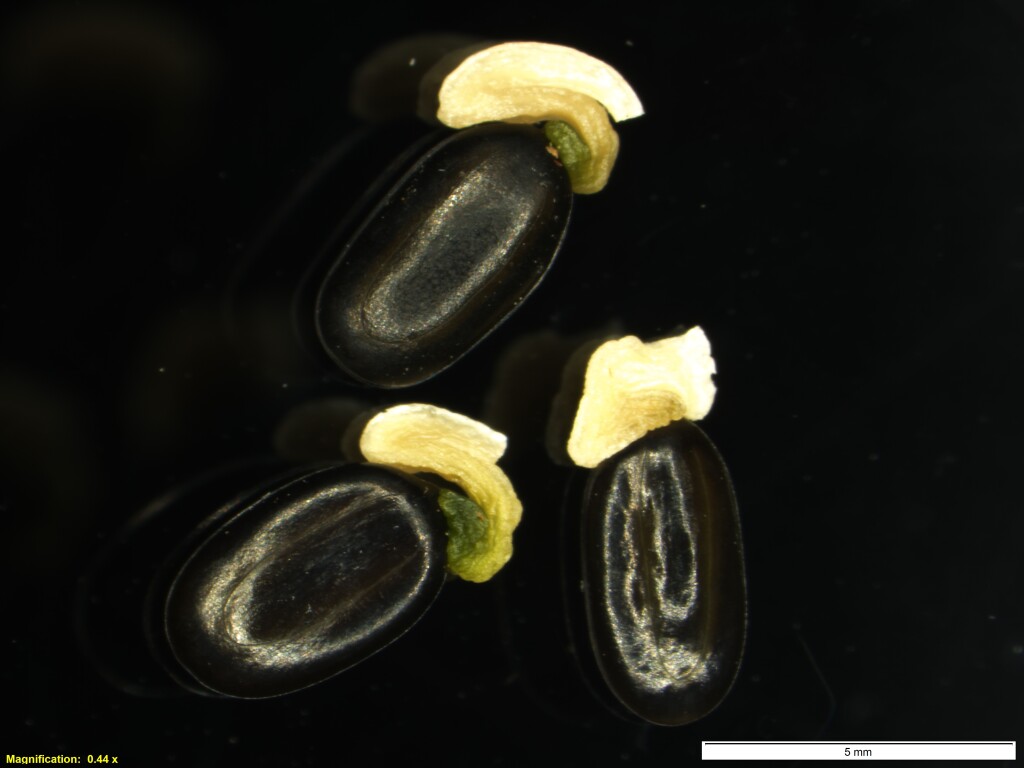Acacia exudans
Lindl. Casterton WattleSlightly aromatic, dense rounded shrub, 1–4 m high; branchlets not or only slightly flexuose, angled and often viscid with a thick band of dark resin between slighty raised yellow bands when young, but soon terete, glabrous. Phyllodes narrowly oblong-elliptic to narrowly elliptic or oblanceolate, occasionally elliptic or lanceolate, (2.5–)3–6(–7) cm long, 5–20 mm wide, ± straight, scarcely resinous-punctate, glabrous, margins with appressed hairs when young; veins 2, lateral nerves few and obscure; gland 0–3(–4) mm above pulvinus. Peduncles 1–2(–3) per axil, 4–10 mm long, stout, densely tomentose, basal bract caducous or persistent; heads globose, 6–9 mm diam., 50–60-flowered, lemon yellow. Flowers 5-merous; sepals united. Pods narrowly oblong, 2–7 cm long, 5–8 mm wide, thinly coriaceous-crustaceous, glabrous; seeds longitudinal, obloid-orbicular, 3.8–4.3 mm long, shiny, dark brown or black, aril terminal. Flowers Sep.–Oct.
GleP, VVP, DunT. Confined to far south-west Victoria near Casterton, growing in heath or low eucalypt woodland, often along degraded road verges.
Acacia exudans is similar in many respects to A. rostriformis and A. verniciflua. Acacia rostriformis is distinguished from A. exudans by the branchlets having dense appressed hairs, distinct phyllode shape, and smaller flower heads. Acacia exudans is distinguished from A. verniciflua by its densely hairy peduncles, large (3–4 mm long) persistent basal peduncular bracts, and stipules that are usually persistent (caducous in A. verniciflua).
 Spinning
Spinning
